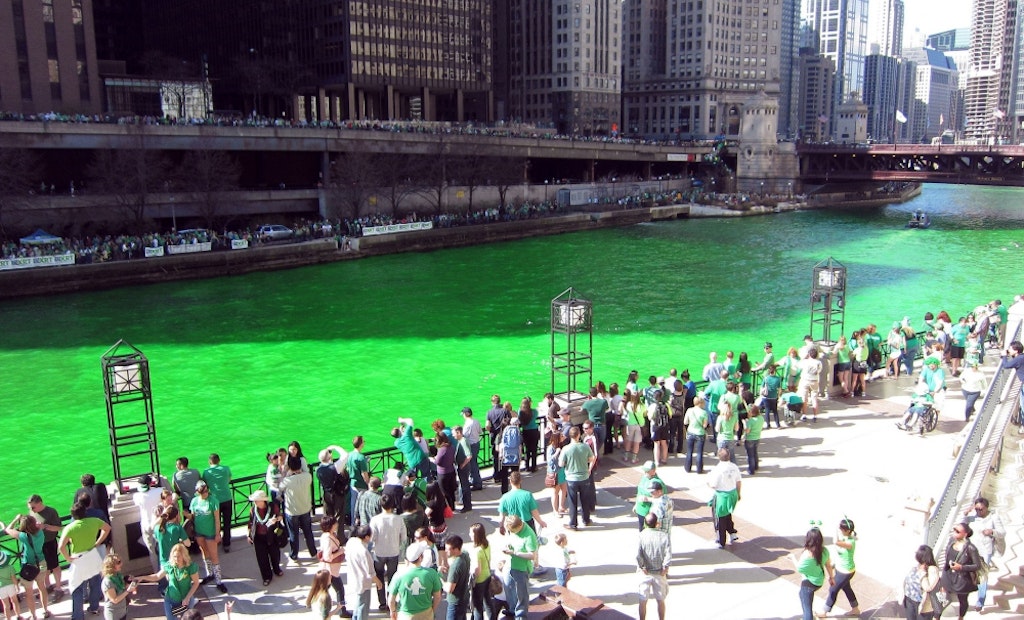
Nearly a half million people descended on downtown Chicago last Saturday for its annual St. Patrick’s Day festivities. Dying the Chicago River a vivid green remains among the world’s most famous rituals in observance of the holiday.
The tradition began in 1961 after local plumbers used fluorescein dye to trace the source of illegal pollution discharges that would seep into the river and turn it green. For this reason, the EPA outlawed the use of fluorescein once it was found to be harmful to the environment. Today, members of Chicago Journeyman Plumbers Union Local 130 use 40 pounds of powdered vegetable dye.
Now, with environmentally friendly dye — and many years of cleaning up after an event that attracts more than 400,000 visitors annually — the St. Patrick’s Day celebration in Chicago has become just another part of the routine for city workers.
“The events, including the dyeing of the river, do not have any unusual implications for our department,” says Pete Scales, director of public affairs for the Chicago Department of Water Management, which is in charge of water purification and distribution, as well as maintaining the water and sewer infrastructure. “The Department of Streets and Sanitation has a regular cleaning operation for special event and parades such as this, but I wouldn’t consider that anything out of the ordinary.”
Photo Credit: “St. Patrick’s Day, Chicago” by Alan Light, used under CC 2.0





